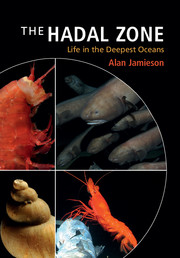Part IV - Patterns and current perspectives
Published online by Cambridge University Press: 05 February 2015
Summary
Introduction
Trying to put the trenches and the hadal community into some form of coherent ecological context is very difficult for many reasons. Beyond what we already know about deep-sea biology and ecology in general (e.g. Gage and Tyler, 1991; Herring, 2002) there is a historical lack of systematic and comprehensive sampling campaigns at hadal depths, and on issues specific to organisms at very high pressure. The problem stems from a historical mismatch of opportunity and method. The 1950s provided a rare opportunity to compile the best marine scientists of the age and embark on lengthy and expensive voyages to sample as many trenches as possible from around the world. Such investments in sea-going activity are no longer commonplace despite the fact we now have advanced technology and methodology, and a much better understanding of statistical methodology and sampling design. Playing ‘catch up’ with regards to narrowing the gap in knowledge between the hadal zone and other marine environments is set to be a long drawn out game, despite the recent resurgence in interest.
In an ideal world, this book would end on an all encompassing and in-depth chapter on the ecology of the hadal zone, but in reality this is still a long way off. We do, however, have a good feel for many of the ecological trends that are likely to drive what we observe at the great depths. For example, the trench fore arcs are likely to host chemosynthetic communities, the extent and importance of which are still unknown (Blankenship-Williams and Levin, 2009).
- Type
- Chapter
- Information
- The Hadal ZoneLife in the Deepest Oceans, pp. 239 - 240Publisher: Cambridge University PressPrint publication year: 2015



